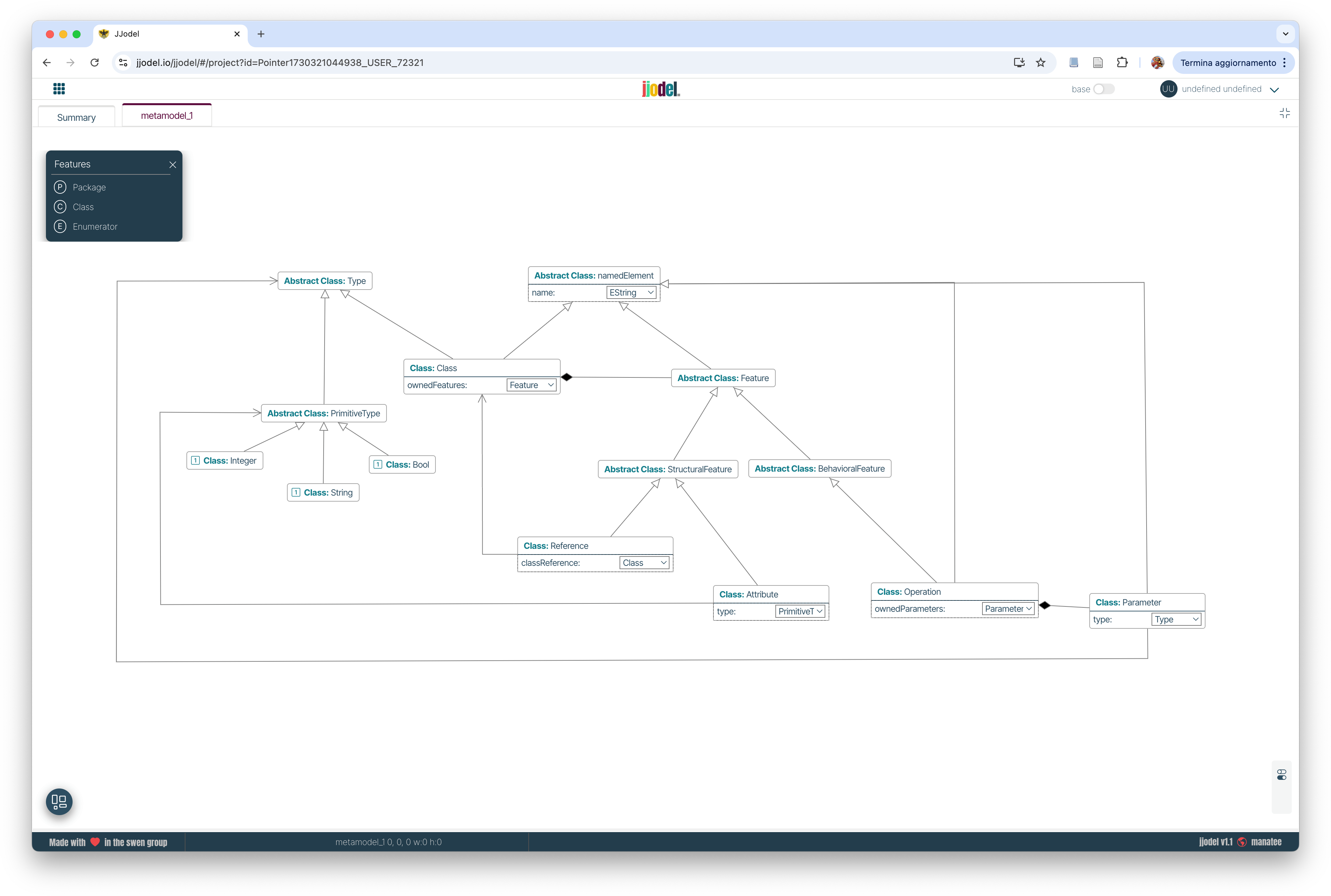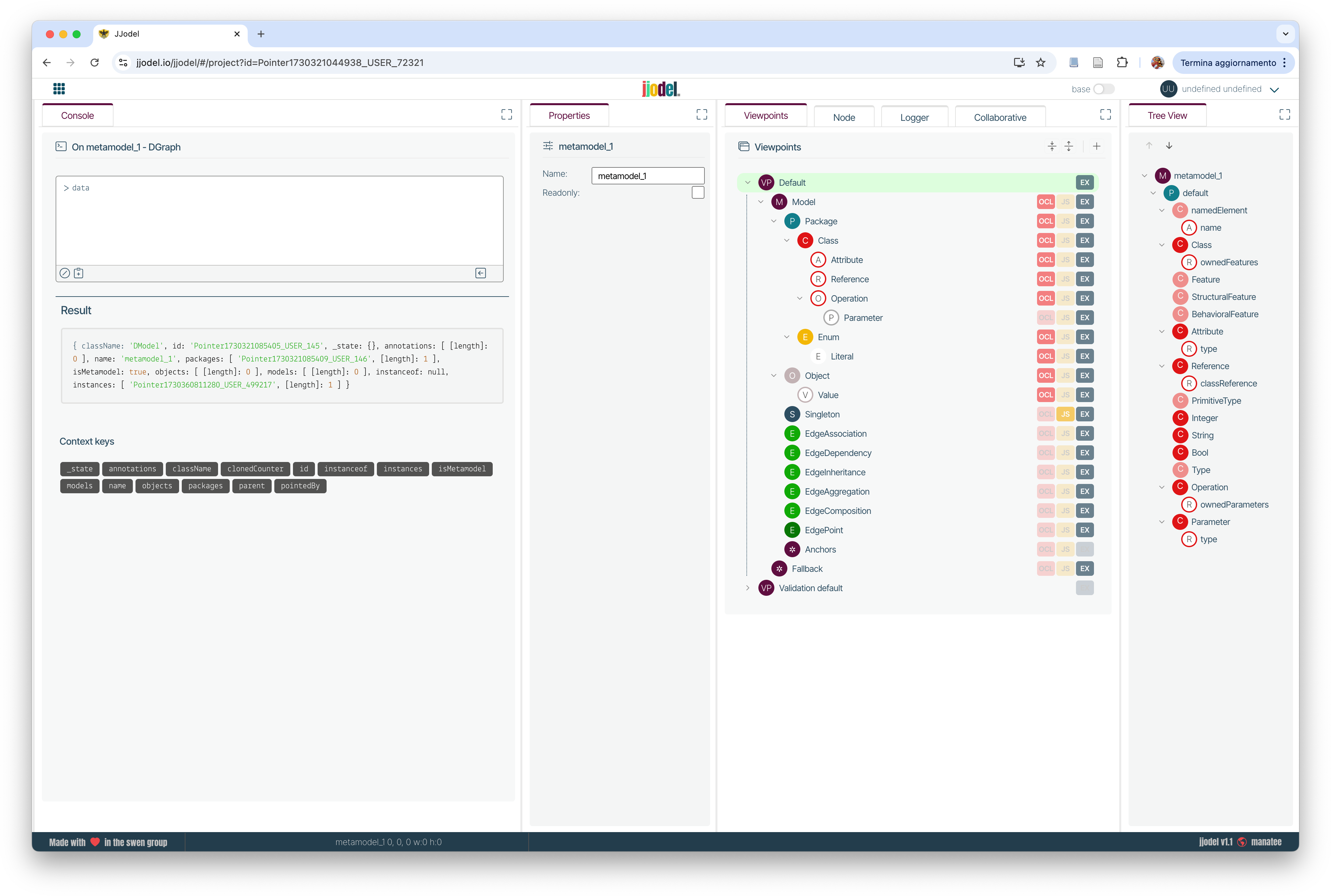Getting started
Local installation? In addition to its cloud-based accessibility, jjodel can also be used locally by downloading a Dockerized component or the full source code for those who prefer a more hands-on experience.
Welcome to jjodel, a powerful cloud-based platform for designing, testing, and managing Domain-Specific Modeling Languages (DSLs) and model-driven engineering tasks. Whether you’re an educator, student, or industry professional, jjodel provides the tools to simplify and accelerate your modeling work. Follow this guide to get started quickly!
1. Sign Up and Log In
Step 1: Begin by signing up on jjodel. Registration is free and only requires few seconds. Just click the link, and you’re ready to go!
Step 2: Log in to jjodel with your email and password. Being cloud-based, jjodel requires no installation, so you can get started right from your browser.
2. Explore the Interface
Once logged in, you’ll see jjodel’s intuitive workspace. Here’s a quick overview of the main sections:
Dashboard: Your hub for managing projects, accessing recent files, and viewing tutorials.

Main Menu: The access point for creating new projects, metamodels and models (located in the upper-left side of the dashboard).

Model Editor: The space where you design your models. Drag and drop elements, connect them, and modify properties with ease.

Properties Tabs: a set of tabs for specifying the different aspects of a modeling notation, from the properties of a single model element to the concrete syntax definition details and styling.

What comes next?
Once you get to know the user interface of Jjodel and some of its features, you are ready to create your first metamodel, model, and viewpoint – in essence, your first language workbench.
Create a Metamodel for a Simple UML Class Diagram
This video provides a step-by-step guide to creating a simple UML class diagram metamodel. Viewers will learn how to define core elements such as classes, attributes, and relationships, building a foundational structure for UML modeling. With clear explanations and hands-on examples, the tutorial simplifies metamodeling concepts, making it accessible for both beginners and those looking to reinforce their skills

